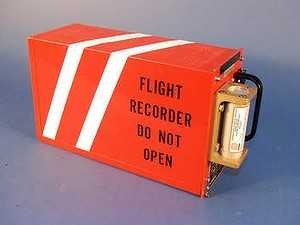In another 10 years, the very idea of a ”black box” flight data recorder on an airliner will seem as naive and outdated as a smoking section.
The world is entering a new hyper-connected era, when nearly every physical thing will be connected to networks, each constantly yammering about what it’s doing or sensing, sending valuable data through the cloud to computers that can instantly analyse the information, look for patterns and help us understand our world better.
Today’s airliners are so out of sync with this era, they might as well be a guy with a mullet. A modern plane such as the Malaysia Airlines Boeing 777 is jacked full of computers and sensors spinning out enormous amounts of data, and yet the plane is connected to nothing. While it’s up in the real clouds, the plane’s systems have no contact with the technology cloud. It is as ridiculous as buying the most whiz-bang laptop on the market and never connecting it to the internet.
The black box on every airliner records data from up to 1000 different parameters for 25 hours – and then erases it. Data is becoming the most valuable resource on the planet, yet airline companies dump it, thinking the data is useful only if a plane crashes – which is like believing medical data about a patient is useful only as a way to later figure out why the person died.
Of course, black boxes have been in the news because of the Malaysia Airlines crash. Since airliners aren’t connected, all the data about that crash is sealed in a box that, as of this writing, has not been located. The same happened when an Air France flight dropped into the ocean in 2009, and the box was not found for two years.
Ever since, technologists have advocated streaming the black box data back to ground computers through constant connections with satellites or towers on land. The concept has gone nowhere. Airline executives and government agencies have said it is too expensive to outfit the world’s 20,000 commercial aircraft with the technology and pay for all that communication bandwidth when crashes are rare and a lost box is rarer still.
But that’s a myopic view. Connected airliners and the data from them would prevent more mechanical failures or pilot errors or terrorist attacks from happening in the first place. The information would also help airlines save money on fuel and maintenance and find efficiencies they cannot yet even imagine.
For a little perspective, consider the frenzy going on right now in Silicon Valley, New York, Tel Aviv and every other corridor of innovation. Entrepreneurs are running around looking at everything that exists and asking, what if that had some digital smarts and was connected? How would that change what that thing can do and the value it can create?
A home’s front-door lock hasn’t changed much in hundreds of years. Now Lockitron is making a connected lock that can be unlocked from anywhere with a smartphone. It collects data on when people enter or leave, which could be useful in finding out if your high school daughter is bringing her boyfriend to the house when she should be in class. Nest added connectivity and data to the thermostat and sold the company to Google for $3 billion. Nike is making connected shoes. Whistle brings us connected dogs.
All of these devices put a wireless connector and some smarts in the hardware, so the thing can do a little data processing locally, then send information out to a data centre, where bigger computers can analyse it, massage it and make it do something useful – the way Nest helps figure out ways to more efficiently heat your home.
This is the way of the hyper-connected era, whether in a lock or something much more complex, like an airliner. A few years ago, jet engine maker General Electric bought a company called SmartSignal, which developed software that can watch data coming from sensors in a jet engine and learn the patterns of that particular engine. Then, as the data streams by, the software can tell if there’s an anomaly and will know beforehand if a part is about to break.
Today, that all happens inside the airborne plane, and the system sends up a warning only when something looks wrong.
On a connected plane, the software could act like a Nest for engines, sending appropriate data back to bigger computers that could compare engine data from all the airline’s planes and look for ways to operate more safely with less downtime.
Imagine if, during the September 11 attacks in 2001, the engines had been able to talk to the ground and say they had been revved in a way that suggested they were being driven by an amateur. Might that have changed some outcomes?

 JOIN DRIVERN TAXI AS PARTNER DRIVER TODAY!
JOIN DRIVERN TAXI AS PARTNER DRIVER TODAY!










